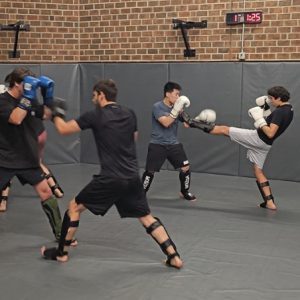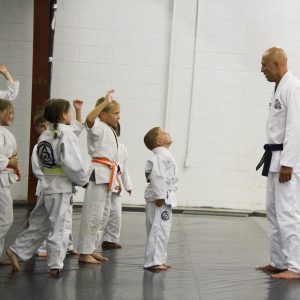| Main Topics | Subtopics |
|---|---|
| 1. Introduction to Gracie Jiu-Jitsu | The Origins of Gracie Jiu-Jitsu |
| 2. Overview of Gracie Jiu-Jitsu for Kids | Understanding Jiu-Jitsu for Different Ages |
| 3. Physical Benefits for Kids | Increased Strength, Flexibility, and Coordination |
| 4. Enhances Mental Focus and Discipline | Focus Improvement, Goal Setting, and Discipline Through Training |
| 5. Building Confidence and Self-Esteem | Achieving Milestones and Overcoming Challenges |
| 6. Learning Self-Defense Skills | Practical Self-Defense Techniques for Kids |
| 7. Gracie Jiu-Jitsu vs. Other Martial Arts | Comparison with Karate, Taekwondo, and Boxing |
| 8. Improving Social Skills | Teamwork, Cooperation, and Making Friends |
| 9. Respect for Others and Responsibility | Teaching Respect in and Outside the Dojo |
| 10. Reducing Anxiety and Stress | Emotional Regulation and Stress Relief Techniques |
| 11. The Role of Instructors in Child Development | How Instructors Shape Positive Behaviors |
| 12. Gracie Jiu-Jitsu Competitions for Kids | Benefits of Participating in Tournaments |
| 13. Family Involvement in Jiu-Jitsu | Encouraging Family Bonding Through Training |
| 14. Healthy Lifestyle and Fitness Habits | Encouraging Physical Activity and Nutrition Awareness |
| 15. Conclusion and Final Thoughts | Why Gracie Jiu-Jitsu is a Great Choice for Kids |
All the Benefits of Gracie Jiu-Jitsu for Kids
Gracie Jiu-Jitsu is more than just a martial art; it’s a way of life that offers numerous benefits for kids, ranging from physical strength to mental resilience. In this article, we’ll dive into all the ways Gracie Jiu-Jitsu can positively impact a child’s development, both on and off the mat.
1. Introduction to Gracie Jiu-Jitsu
Gracie Jiu-Jitsu, originating in Brazil, is a form of self-defense developed by the Gracie family. Known for its emphasis on leverage, ground fighting, and submissions, Gracie Jiu-Jitsu empowers individuals of all sizes to defend themselves effectively. This unique martial art is especially beneficial for kids, as it teaches them how to use technique over brute strength.
2. Overview of Gracie Jiu-Jitsu for Kids
When it comes to children, Gracie Jiu-Jitsu is structured to suit various age groups. Whether it’s playful yet instructive activities for younger children or more advanced techniques for older kids, the curriculum is designed to ensure that every child can benefit from the training at their own level. Kids as young as four can begin learning, gradually building upon skills as they grow older.
3. Physical Benefits for Kids
Training in Gracie Jiu-Jitsu helps kids improve their overall physical fitness. Here are a few ways it boosts physical health:
- Increased Strength: Kids develop stronger muscles, particularly in the core, legs, and arms.
- Flexibility: The various movements in jiu-jitsu encourage flexibility, reducing the risk of injury.
- Coordination: Practicing moves requires coordination between different body parts, improving motor skills and agility.
4. Enhances Mental Focus and Discipline
One of the core benefits of Gracie Jiu-Jitsu is the way it promotes mental clarity and focus. Learning and executing techniques requires full attention, pushing kids to hone their ability to concentrate. Beyond the mat, this increased focus often translates into better performance in school and other activities.
5. Building Confidence and Self-Esteem
Nothing boosts a child’s confidence quite like achieving something they thought was beyond their capability. Whether it’s mastering a new move, earning a stripe, or progressing to the next belt level, Gracie Jiu-Jitsu is full of opportunities for kids to build their self-esteem. Overcoming challenges helps them understand that with persistence and effort, they can accomplish anything.
6. Learning Self-Defense Skills
Gracie Jiu-Jitsu equips kids with practical self-defense techniques, which are highly effective in real-world situations. It teaches them how to protect themselves using leverage, balance, and positioning, which is especially important in preventing bullying or physical altercations. Knowing they can defend themselves instills a sense of security and peace of mind.
7. Gracie Jiu-Jitsu vs. Other Martial Arts
How does Gracie Jiu-Jitsu compare to other martial arts like Karate or Taekwondo? One key difference is the emphasis on grappling and ground fighting, rather than strikes. While other martial arts may focus on kicks and punches, Gracie Jiu-Jitsu teaches how to neutralize an opponent without relying on brute force, making it ideal for smaller children.
8. Improving Social Skills
Gracie Jiu-Jitsu is typically practiced in pairs or small groups, providing a perfect environment for kids to interact, communicate, and form friendships. The camaraderie built on the mats often extends beyond the dojo, improving a child’s social life and teaching them the importance of teamwork and cooperation.
9. Respect for Others and Responsibility
Respect is a foundational principle in Gracie Jiu-Jitsu. Kids are taught to respect their instructors, training partners, and the art itself. This instills a deep sense of responsibility and humility, which often extends to other areas of their lives, including school and home.
10. Reducing Anxiety and Stress
Physical activity is known to reduce stress, and Gracie Jiu-Jitsu is no exception. The controlled, focused movements help kids release pent-up energy and emotions, making it an excellent outlet for reducing anxiety. Training also fosters mindfulness, helping kids remain calm under pressure.
11. The Role of Instructors in Child Development
Instructors in Gracie Jiu-Jitsu are more than just teachers; they are mentors who guide kids through both the physical and mental challenges of training. A good instructor helps shape a child’s attitude towards learning, resilience, and problem-solving, making them role models in a child’s development.
12. Gracie Jiu-Jitsu Competitions for Kids
While competition isn’t mandatory, it offers significant benefits for kids who choose to participate. Competitions teach kids how to handle both victory and defeat with grace, helping them build resilience and sportsmanship.
13. Family Involvement in Jiu-Jitsu
Gracie Jiu-Jitsu can also become a family activity, with parents often joining their children in classes. This shared experience fosters family bonding and encourages healthier lifestyles for the entire household.
14. Healthy Lifestyle and Fitness Habits
Jiu-Jitsu training naturally encourages a healthy lifestyle. Kids who practice regularly are more likely to stay active and develop an interest in nutrition, fitness, and overall well-being, which can lead to lifelong healthy habits.
15. Conclusion and Final Thoughts
In conclusion, Gracie Jiu-Jitsu offers a comprehensive set of benefits for kids. From physical strength to mental resilience, self-defense, and social development, it’s a great way for children to grow into confident, disciplined, and well-rounded individuals. Whether your child is shy, full of energy, or somewhere in between, Gracie Jiu-Jitsu can provide them with the tools they need to succeed.
FAQs
1. At what age can children start Gracie Jiu-Jitsu?
Children can start as young as four years old, with age-appropriate classes designed to cater to their development.
2. Is Gracie Jiu-Jitsu safe for kids?
Yes, Gracie Jiu-Jitsu is designed with safety in mind, teaching techniques that minimize injury while providing an effective self-defense strategy.
3. How does Gracie Jiu-Jitsu benefit shy kids?
Shy kids often gain confidence through Gracie Jiu-Jitsu as they learn to overcome challenges and interact with peers in a supportive environment.
4. Can Gracie Jiu-Jitsu help with bullying?
Yes, Gracie Jiu-Jitsu equips kids with the self-defense skills and confidence needed to prevent and address bullying effectively.
5. How often should kids train in Gracie Jiu-Jitsu?
Most kids benefit from training 2-3 times per week, though frequency can vary depending on the child’s interest and goals.
6. Does Gracie Jiu-Jitsu help improve school performance?
Yes, the discipline, focus, and goal-setting skills learned in Gracie Jiu-Jitsu often translate to improved performance in academics.



